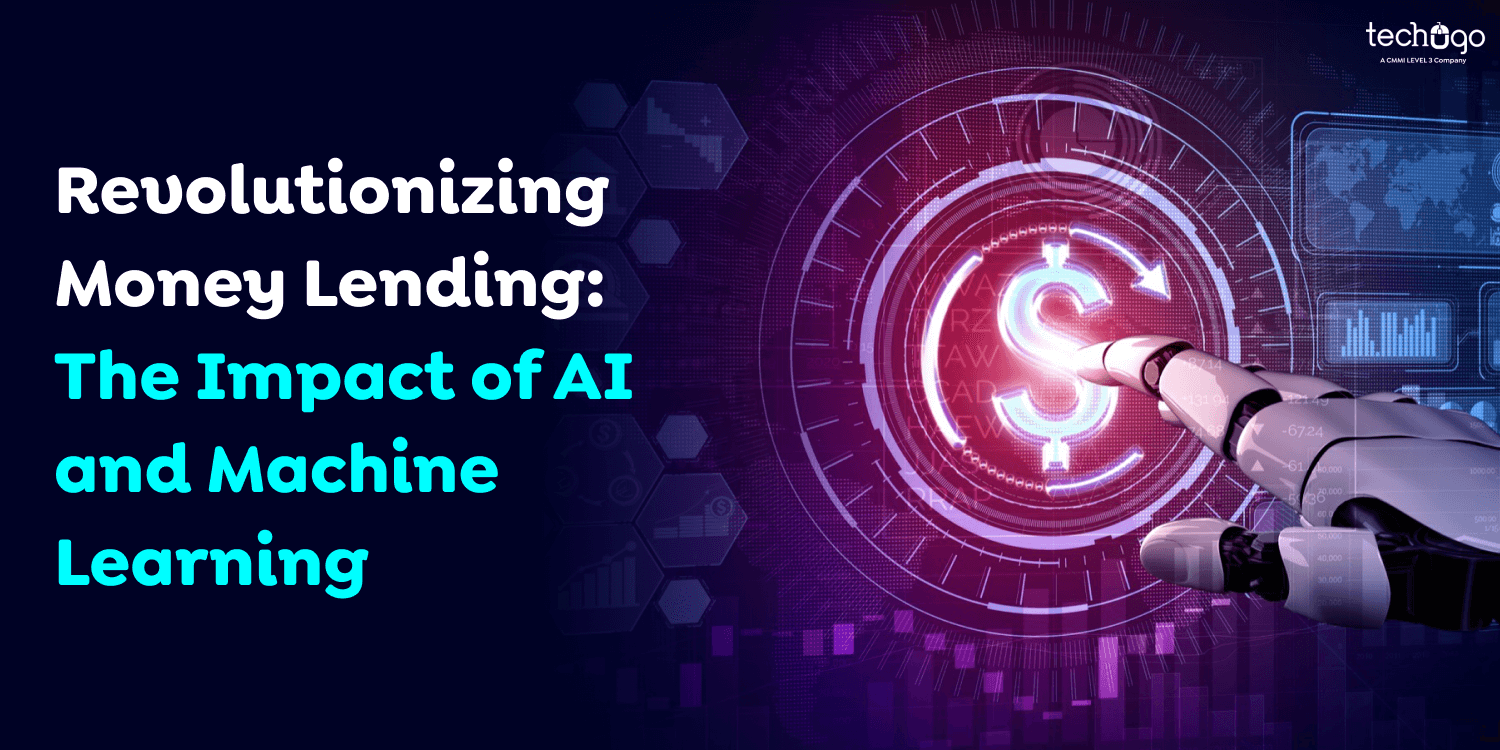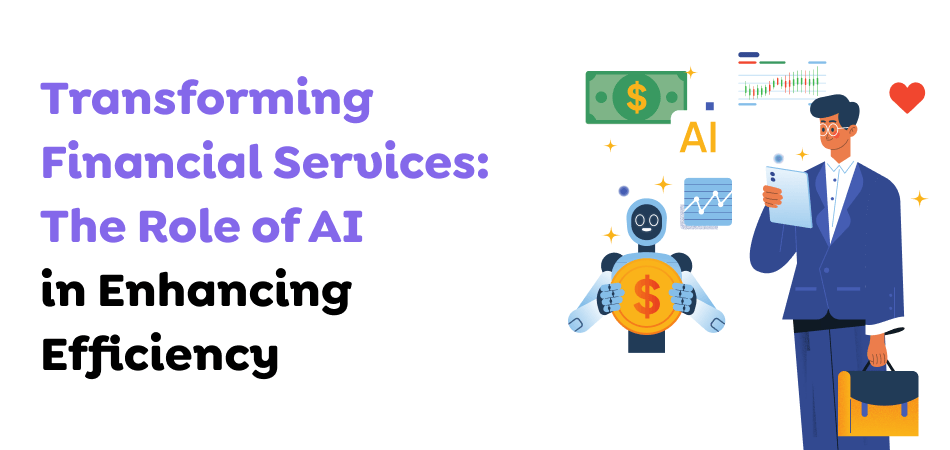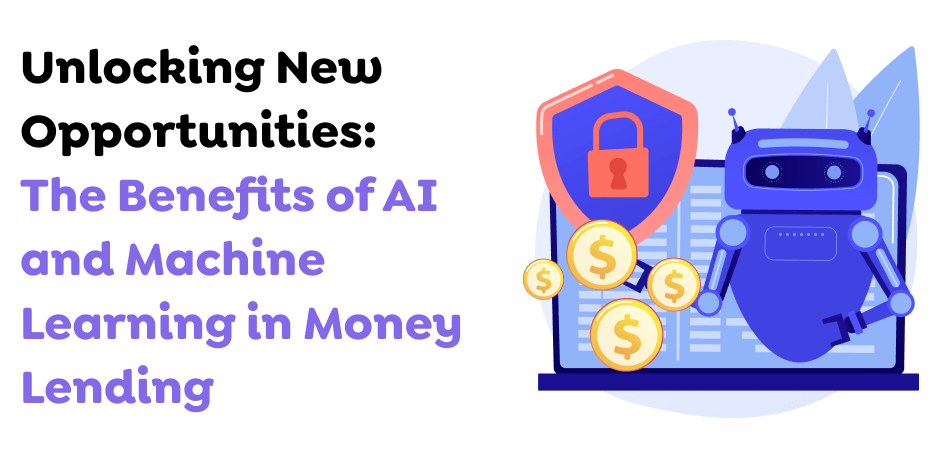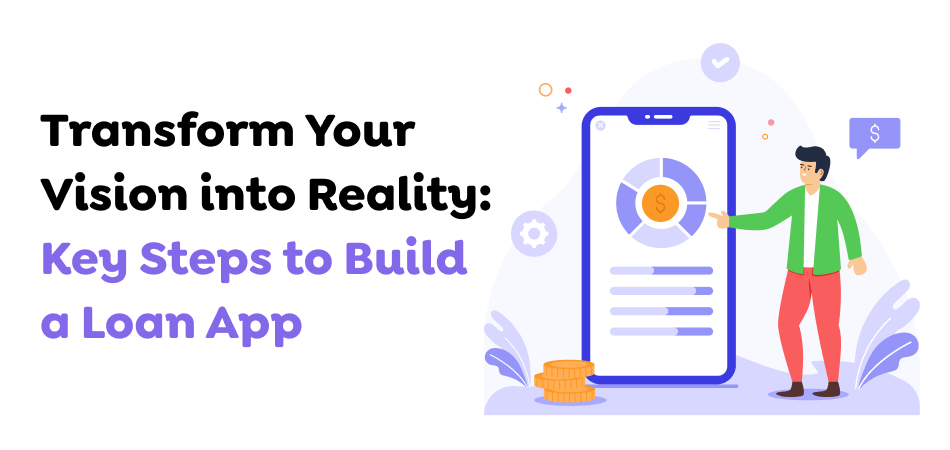30 Oct 2024
Revolutionizing Money Lending: The Impact of AI and Machine Learning
Matthew Connor

The fintech industry has seen significant changes due to rapid technological advancement. Integrating AI and ML in a money lending app represents a significant shift in delivering financial services.
Upstart Fintech has set the benchmark for revolutionizing how people borrow money using AI-driven algorithms. It was founded in the past by ex-Googlers to develop an application that gives access to credit at a low cost and lowers costs and risks.
A money lending app is becoming popular due to its high-tech features, such as alternative options for data analysis that speed up approvals and lower default rates due to precise risk analysis. If more banks use this technology, it will lead to more effective, fair, and easier loans than ever before.
The old cash loan process was time-consuming, requiring human involvement and manual scoring credit. This caused lengthy processing or waiting times, an increase in the percentage of rejections, and the inability to access credit.
The latest technology enables lenders to analyze vast amounts of data and assess creditworthiness to automate various decision-making processes. Thus, both borrowers and lenders can study in a personalized way.
This page will help you discover the ways that AI on lending is doing to revolutionize the fintech industry. Know valuable details about the advantages of using AI to loan money. Also, you will learn how new technologies enhance the accuracy and efficiency of loans to improve customers’ experience.
What Function Does AI Have in the Financial Industry?

Artificial Intelligence (AI) has transformed various sectors, and finance is no exception. Advancements in AI have revolutionized the landscape of finance with new tools and applications that significantly improve the effectiveness of financial institutions. In everything from risk assessments to fraud detection and customer experience, AI has enabled unprecedented efficiency and precision in the financial sector.
Also Read : How AI is going to transform Fintech in Canada
Financial Institutions Employ Artificial Intelligence
Recently, many financial institutions have expressed interest in how artificial intelligence (AI) could alter the way loans are offered and the way credit decisions are made. AI, as well as data obtained from various sources, allows lenders to assess the strength of their financials and the solvency of the applicants.
The Lending Process and AI
A money lending app, including machine learning and artificial intelligence, has had an enormous effect on the AI sector of loans. AI algorithms simplify loan applications and payment procedures. The system’s ability to analyze vast amounts of data has helped make the process of paying customers speedy and efficient, considerably making the process easier.
What is the Effect of AI on the Risk Management Process in Banks?
Risk management is one of the most important areas where AI achieves excellent results. Using AI-based algorithms, lenders can detect risks more easily.
1. Online AI Lending Platforms
Online money lending platforms utilize artificial intelligence to rapidly assess loan applicants’ creditworthiness and risk profiles, speeding up the approval and distribution processes. Whether a person is seeking large sums or a modest 100-dollar loan, AI-powered algorithms will guarantee fair and individualized loan terms that match their circumstances. Furthermore, these platforms let borrowers quickly evaluate various loan options to make informed decisions and get the most favorable loan terms.
2. AI-Driven Customer Acquisition
Acquiring new customers is essential to succeeding in today’s rapidly changing banking industry. With the advancement of technology, banks are using artificial intelligence (AI) in lending as a potent instrument to improve their strategies for attracting customers. With the help of AI, lenders can change their methods of engaging and helping customers, which results in greater efficiency and better results.
- Lenders can use AI-powered algorithms: The AI-powered algorithms are used to rapidly and efficiently analyze large quantities of data, gaining extensive insights into the consumer profile. This analysis encompasses various data types, such as credit history, income, and financial habits. This method allows students to make better, more accurate, and informed decisions.
- Eliminating the effects of prejudice among individuals: Traditional methods for acquiring clients can unintentionally encourage bias, which disadvantages certain groups, especially minorities. AI (AI) can develop more objective and impartial client acquisition methods to ensure equality and fairness for any potential borrower.
- Making an application faster: Processing many applications may take much work for lenders. Artificial intelligence speeds up and streamlines the application process, which allows clients to get faster responses and banks to process a variety of applications in a short time.
- AI-powered chatbots: With AI-powered chatbots, customer relations within the lending industry are changing. Chatbots can provide tailored advice and assistance for borrowers, quickly solving problems and improving satisfaction throughout the purchase process.
Also Read : Revolutionizing Fintech: The Role of React Native App Development
Benefits of AI and Machine Learning in Money Lending

Lenders can drastically reduce their operating expenses through AI-led lending options because the vast majority of tedious and redundant processes can be automated, reducing the requirement for human labor. This will not only reduce operating costs but also allow for an efficient and targeted distribution of human resources.
Here are some other ways in which AI, as well as Machine Learning, are revolutionizing the lending sector:
1. Credit Score
The creditworthiness of a borrower’s business determines the value of a loan. To evaluate a person’s creditworthiness, algorithms backed by ML technology analyze the vast amount of data from mobile devices, social networks, payment systems, and websites.
A credit score is created by analyzing a prospective borrower’s digital footprint. Lenders use it to determine the value of a loan. A quick decision-making process reduces the processing time of loans considerably.
2. Lower Costs
The value of a loan will be determined by the reputable the borrower’s or lender’s business is. Algorithms aided by ML technology analyze an enormous amount of information from mobile devices, social networks, payment systems, and websites to determine a person’s creditworthiness.
Lenders use the credit score to calculate the loan’s value by analyzing the prospective borrower’s digital footprint. Due to the speed of decision-making, the loan processing process is much faster.
3. Risk Management
Stacking loans is a common practice in lending, where borrowers borrow several loans from different lenders. A money lending app require AI and the ability to track customers’ behavior and identify suspicious patterns that could lead to fraud based on massive amounts of transactions and user data.
BFSI businesses can make educated judgments based on the actionable knowledge that ML technology’s insights offer. Machine learning-powered algorithms can spot clients likely to fall behind on loans and collaborate with lenders to modify the loan’s terms.
4. Faster KYC
Conventional know-your-client (KYC) processes require manual work and much time. AI can make this process easier. Customer behavior data is examined to discover patterns, and loans can be customized to the individual’s requirements. This provides lenders with access to a large market.
Regarding client service, chatbot-powered AI assists various customers simultaneously with the necessary products and provides quick assistance.
5. Eliminates Biases
The initial loan process was a time-consuming, largely manual procedure. The dependence on human intervention affected the outcomes and also the speed. Human bias could often seep into the sub-writing procedure, leading to the rejection of an application or lower or higher interest rates to be applied to certain loans, which could result in displeasure from the consumer or loss for the lender.
ML has eliminated this bias by running applications through its algorithms. These algorithms look for patterns and then provide insight and conclusions based on that. This reduces errors and results in better loans for lenders.
Also Read : Explore How AI in Banking Transforms Customer Service and Security
Challenges Faced by Borrowers and Lenders
Despite the growth of online lending platforms, lenders and borrowers face challenges.
1. Effectiveness and Speed of Loan Creation
According to an online survey, 46% of 250 participants stated that financial institutions must wait at least five weeks before closing commercial loans.
In many cases, completing the loan request could take months. If the process is moved from stage to stage, a delay in confirming documents and the time it takes to receive information on credit from the bureaus, poor communication, and unclear loan decisioning guidelines are commonplace.
This slows down loan processes, which frustrates borrowers who generally have to pay high interest rates or do not see highly time-sensitive opportunities. It’s not surprising that they become less confident in lending.
2. Unified Documentation is yet to be Available.
The lack of a centralized repository that could simplify and standardize information can lead to errors, inconsistencies, and delays. Loan processors often require help getting information speedily and responding to customers’ questions quickly.
Proper data management is vital to checking the creditworthiness of a potential borrower. The absence of a consistent document hampers the ability to analyze and compare data from different groups of borrowers, making it difficult to conduct accurate credit and risk assessments.
Furthermore, technology integration and automation are only possible with standardized documents, which is difficult to achieve because of legal variations, the various borrower profiles of different lenders, and the degree of complexity of the documents.
3. Disparate User Experience
Inconsistency in workflows can lead to issues for customers throughout their journey. This is due to inconsistent procedures and documentation requirements, procedures for administration hierarchy of applications, regulations, terms and conditions, communication channels, and customer service.
There are many reasons for this, including the need for more easy-to-use platforms and clear communication channels. These discrepancies impact borrowers’ confidence and reduce their confidence in lenders’ services.
4. Legal Issues
Lenders must be careful when navigating the complicated federal regulations governing consumers’ privacy and compliance. These include laws such as the Truth in Lending Act (TILA), the Fair Credit Reporting Act (FCRA), and the Equal Credit Opportunity Act (ECOA).
Compliance with these regulations, including clear and precise disclosures about loans, maintaining the highest standards in lending, and safeguarding borrower data, requires expertise and discretion. If an error occurs, it usually results in penalties.
5. Recovering Debt
More data in real-time results in difficulties regarding debt recovery. Debtors may be unable to respond, change their contact details, or even locate themselves within many documents, which can be difficult. Resources like Cloud reviews on credit repair may be helpful in this specific area.
They might also challenge its validity, reliability, and enforceability or even question its origin, triggering lengthy discussions or a legal dispute.
Also Read : Stay Ahead of the Curve: 8 Effective Ways to Protect Your Fintech App
Steps to Build a Loan App

Suppose you’ve completed some research by studying your buyer personas and identifying your ideal customer. What next?
1. Choose a platform
To develop a money lending app, you’ll first need to determine what platforms it’ll support. Will it be only accessible through the Internet, or do you want to create mobile apps for investors and borrowers?
Because you’re likely to target large numbers of consumers, it’s best to look into cross-platform application development frameworks. Using multi-platform app development tools like React Native, you can expedite peer-to-peer loan lending app development.
2. Create an Inventory of Attributes.
In this stage, you determine the features of a money lending app you choose and what it will offer from its competitors.
3. Mobile App for Borrowers
We’ve already mentioned the list of must-haves and add-on features earlier. The list could be an excellent point of reference. Be sure that the application has a unique feature.
4. Mobile App for Investors
Remember that when creating an application for lending via p2p, There are two sides to the app: the borrower and the lenders (aka Investors). The latter may require their application to manage their portfolio of investments and select the loan options they wish to invest in.
5. Web-Based Application for Admins and Back-Office Staff.
A portal on the web for managing loans is a feature that most entrepreneurs need to think about. Be aware that you’ll have to keep track of requests for and funded loans, as well as payments and everything else that takes place in mobile applications.
6. Review the Available SDK/APIs along with Libraries.
There’s no need to start over. Many components can be downloaded as plug-ins. After figuring out the functions you want to use, examine the components (in terms of SDKs, APIs, and code libraries) available for your application. Here are some examples:
- Plaid for secure connection with bank accounts
- Twilio to add chat functionality and 2-factor authentication.
- Facebook/Twitter/Google/Apple for quick login
When you select the appropriate combinations of the modules, you’ll be able to dramatically shorten the time to market and reduce the developing budget in the process.
7. Hone in on the UX and UI
The UI and UX of your loan application help differentiate between your business’s success and failure. Change from low-fidelity wireframes to high-quality mockups, testing every screen with your customers.
An interactive prototype can assist you in this journey towards a better customer experience.
8. Develop an MVP
Once you’ve validated your UX and UI using test users, it’s time to develop the MVP version of the loan application. Find an AI app development company like Techugo to establish the loan application and create a portal for managing loans.
This is about putting in the most essential features to allow you to gain momentum in the code.
9. Then, Iterate Upon Feedback from Users.
Once you’ve launched your money lending app and tried it out with real customers out in the open, it’s time to take advantage of users’ feedback. Another tool for collecting information on areas to improve your app is the built-in analytics that monitors users’ travels and assists you in identifying potential obstacles.
10. Maintain the app
Mobile operating systems constantly evolve, with new features added and possibilities to enhance users’ experiences. Therefore, ensuring that your money lending application is up-to-date and utilizes the latest OS capabilities to the fullest extent is essential.
For instance, as of iOS 13 (which has been available for more than a year), your application is now expected to work with your app in the Dark Mode. As you move to iOS 14, it might be beneficial to create the app clip—a part of your app that permits customers to access your money lending app without having to install it.
Another option is to add live widgets for the home screen, which shows the due date and the amount of the next installment.
Also Read : How an AI App Development Company Drives Innovation in Mobile Applications
Ways AI Powers Lending

It is possible to utilize AI to speed up the processing of documents and improve risk assessment. It can also accelerate loan approvals. Here’s a list of its benefits.
1. Simplifies the Process of Processing Loans.
AI helps automate and make simpler the various stages of the loan creation process. Extracting data, collecting it, and verifying it are crucial aspects of underwriting and documentation. They also consume the most. Integrating AI with OCR and NLP will help you reduce manual labor, decrease errors, and accelerate the loan approval process. This will improve the effectiveness of operations and lower expenses.
2. Offers Seamless Customer Experiences
With AI’s help, you can provide faster loan processing times, an easy application process, and personalized deals based on the borrower’s profile.
AI-based algorithms can be incorporated into chatbots and virtual assistants to provide real-time assistance for customers throughout the loan process. Customers are provided with prompt resolutions to their questions and the simplicity and speed of service lead to a smoother customer experience.
3. Enhances Credit Scoring
AI lets lenders develop better strategies to manage risk. Predictive analytics models can help predict the probability of loan delinquencies or defaults by analyzing borrower information, market trends, and market and economic indicators. This assists lenders in managing risks and reducing risk, as well as making more precise price decisions and boosting the efficiency of their portfolios.
4. Optimizes Debt Recovery
AI-powered predictive analytics can analyze vast quantities of data collected from numerous sources and offer insight into handling accounts at risk and delinquency. In addition, ML algorithms can be improved in precision by adjusting input variables.
5. Boosts Compliance
AI tools can assist lenders in meeting regulatory compliance by automating checks and monitoring processes. They also enhance the efficiency of auditing the compliance process by reducing processes and providing transparent, traceable audit trails.
How AI and Machine Learning are Transforming the Money Lending Industry?
Artificial intelligence (AI) and machine-learning (ML) technology are revolutionizing the landscape of various industries, and the field of lending isn’t the only one. From streamlining decision-making to increasing the effectiveness of risk management, AI and ML are changing how banks loan money. Learning about these technologies will help you comprehend how AI is changing the banking industry. Let’s look at how AI and machine learning app development have changed how lenders conduct their business.
1. AI-Enhanced Credit Risk Assessment
One of the most important applications that AI could make for lending relates to sophisticated credit risk scoring. The old method of evaluating an applicant’s credibility was largely manual and relied on factors such as the credit score and history of financials. While these data are important, they may not provide an accurate picture of the borrower’s ability to repay loans.
The most recent AI-powered algorithms can analyze the wide range of data elements comprising:
- Alternative Information Facebook, Twitter, and other social networks use spending patterns, utility bill payments, and many more offer a complete overview of an individual’s spending behaviors.
- Modeling that can Predict: Machine learning algorithms can identify patterns and connections within this vast amount of information and can better predict the likelihood of default than traditional methods.
This advanced risk assessment aids lenders in making better-informed decisions regarding the lending process, reducing defaults and increasing the security of their finances.
2. Streamlining the Loan Application Process
The traditional procedure of submitting loans and underwriting can be long and sluggish for lenders and borrowers. AI and ML have completely changed how businesses are doing by allowing automation and increased efficiency.
Have a look at the following areas that could be made more efficient by AI:
- Automatic Processing of Documents: AI algorithms can extract and analyze data from documents such as income and bank statements, which accelerates underwriting and minimizes mistakes made by hand.
- Chatbots and Virtual Assistants: These AI tools and chatbots help customers navigate their way through apps, respond to frequently asked questions, and collect the necessary information in a user-friendly and efficient way.
- Decision-Making Process Happens in Real-Time: In certain situations, AI, loan approval, and AI power are almost instantaneous, giving better service to applicants and allowing money to those who meet the required criteria.
The simplicity of use and speed made possible by AI streamlining can benefit the borrower while reducing manual labor and expenses for lenders.
3. Fraud Detection and Prevention
Fraud is a persistent issue in lending. AI and ML algorithms have proved to be highly efficient in dealing with the problem of fraud by:
- Identifying Abnormalities: AI will analyze massive datasets to determine “normal” activity patterns. It can provide clear baselines of users’ profiles, transactions, or other normal activities that can be identified for further investigation.
- AI can Detect Fake Networks: It connects seemingly disparate data points, and reveals complex Internet that can conceal fraud.
Utilizing this technology, AI assists lenders in reducing loss by identifying fraudulent loans and transactions.
4. Personalized Customer Experiences
AI and ML enable lenders to develop customized loans, promotions, and suggestions specifically tailored to the person’s requirements. This includes:
- Needs Evaluation: AI algorithms can assess a borrower’s financial position to recommend pertinent loan options, such as term lengths, rates, amounts, and other options that are most appropriate for their circumstances.
- Specifically, Targeted Advertising: Based on the data provided by clients, AI can identify the customers most likely to respond to loans that are targeted and strategically presented in their marketing campaigns.
- Enhanced Customer Support: AI-powered chatbots and virtual assistants provide 24/7 customer support, assisting with issues and queries and enhancing the overall customer experience.
An Evolving Landscape
The use of AI and machine learning in the loan process is rapid and constantly changing. It is essential that lenders approach their AI application with a sense of responsibility, focus on ethical issues, fight bias, and develop transparent, easy-to-understand methods that benefit their own businesses and their customers.
By harnessing the potential that comes from AI and ML in the lending industry, one can reap the potential for greater and sustained efficiency, precision, better customer service, and better financial integration. It’s an exciting place to observe!
Conclusion
AI and machine learning are transforming mobile banking by changing how they work in ways previously thought of as science fiction. The combination of technology has resulted in enhanced security, personalized experiences, and smarter decision-making in financial matters for consumers.
As mobile banking services continue to develop, AI and ML will likely play a more crucial part in shaping the direction of future financial services and ensuring that mobile banking will remain an effective and innovative instrument for both businesses and individuals alike.
In the future, we can anticipate further advancements in mobile banking, fueled by AI and machine learning, to constantly improve the customer experience, broaden the reach of financial services, and help us manage our finances more user-friendly and secure than ever. Mobile banking services are moving towards becoming more essential to our daily lives, and machines and AI are the key to this change. Notably, the rise of money lending apps demonstrates how these technologies enhance accessibility and efficiency in financial transactions.
Get in touch with us today to explore how a money lending app can meet your needs and provide personalized assistance.
Get In touch
We are excited to here from you and let’s start something special Together. Call Us for any inquiry.
Write us
sales@techugo.caJust a call away
About you




